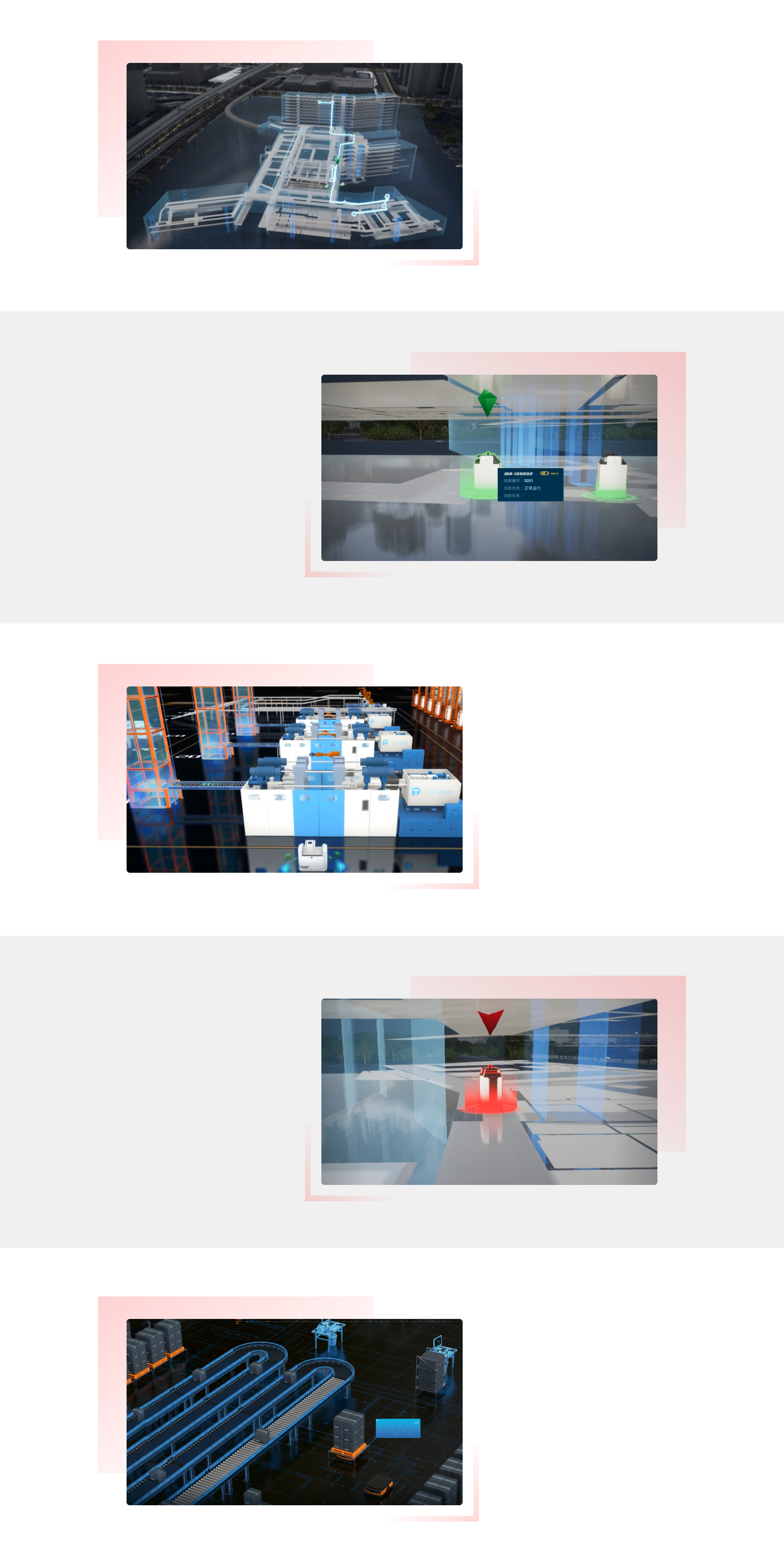Digital twins+AGV
- With the digitization, networking, and intelligence development of the manufacturing industry, the phenomenon of machines replacing manual labor is becoming increasingly common. Using AGVs for cargo handling and warehousing work in traditional warehouse workshops can effectively improve work efficiency and reduce the waste of manpower resources. By combining AGVs with digital twin technology, establishing a digital twin virtual entity of AGVs, and developing an AGV state digital twin control system, real-time synchronous mapping and control of physical entities can be achieved through this system.

Industry pain points

Digital twin AGV positioning utilizes positioning technologies such as laser navigation, visual recognition, etc., to real-time acquire the AGV's location information and conduct path planning and optimization through intelligent algorithms. The system accurately locates the AGV's position and automatically plans routes, enhancing the efficiency and accuracy of material transportation.
Digital twin AGV positioning utilizes sensors and data acquisition technology to monitor the real-time trajectory and operational status of AGVs. The system can monitor and record the running trajectory of AGVs, and through data analysis and simulation modeling techniques, provide operational analysis reports to help companies optimize vehicle transportation routes and enhance vehicle operational efficiency.
Digital twin AGV positioning utilizes sensors and intelligent algorithms to achieve collision avoidance and safety control of vehicle operations. The system can real-time monitor obstacles and hazardous areas around the vehicles, providing intelligent alerts and controls to prevent vehicle collisions and accidents, ensuring the safety of both vehicles and personnel.
Digital twin AGV positioning assists business managers in data analysis and decision optimization through data analysis and decision support. The system can analyze and mine vehicle transportation data, identify potential issues and improvement opportunities, and provide corresponding decision support to help companies optimize workshop logistics transportation processes, enhance production efficiency, and resource utilization.
Digital twin technology provides support for AGV positioning, vehicle scheduling, and collaborative operations. The system can intelligently schedule and coordinate operations by real-time acquisition of vehicle positions and task information, thus avoiding congestion and conflicts, and enhancing vehicle utilization and transportation efficiency.
Real-time positioningand path planning
Vehicle dispatching andcollaborative operations
Trajectory monitoringand operation analysis
Collision preventionand safety control
Data analysis and optimizationdecision-making

Classic Case
The first affiliated hospital of Ningbo University
Combining technologies such as the Internet of Things, digital twins, Building Information Modeling (BIM), Geographic Information Systems (GIS), big data, etc., integrating hospital campus management and internal medical data resources, constructing a lightweight, simplified architecture, three-dimensional visual "single map" to achieve integrated control of people, events, and objects within the hospital campus.
By constructing an intelligent logistics "single map," using robots to replace traditional manual transportation of medical supplies, overseeing robot operations through visual data dashboards, and viewing and controlling the starting points, path planning, and delivery information of each robot, the time spent by medical staff in transferring supplies in operating rooms, wards, pharmacy departments, and sterile compounding centers is reduced, along with the waiting time for supply usage, thus fully liberating the working time of medical staff.





